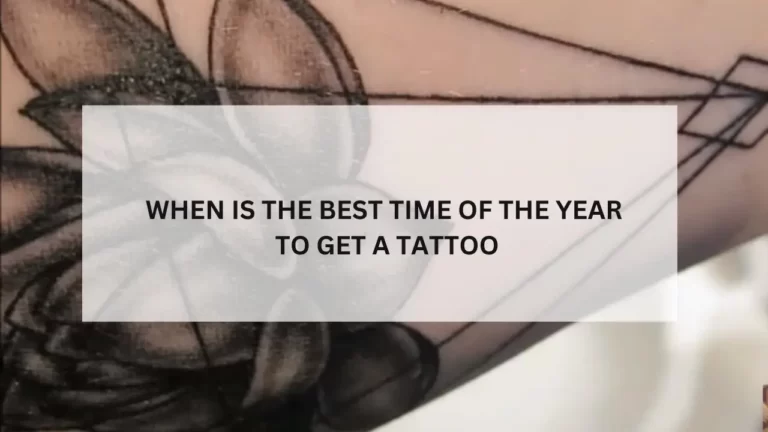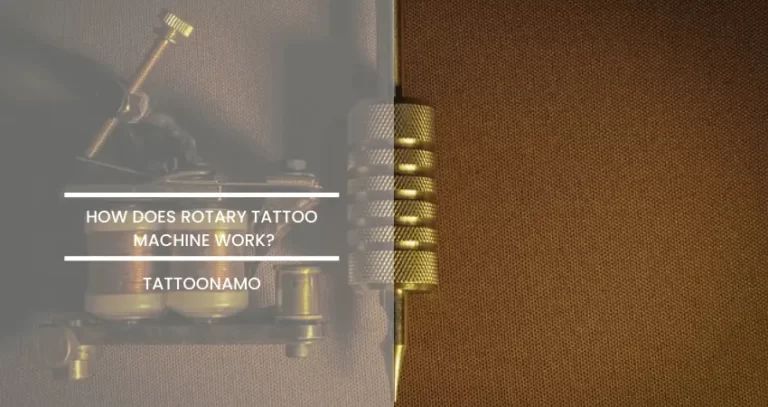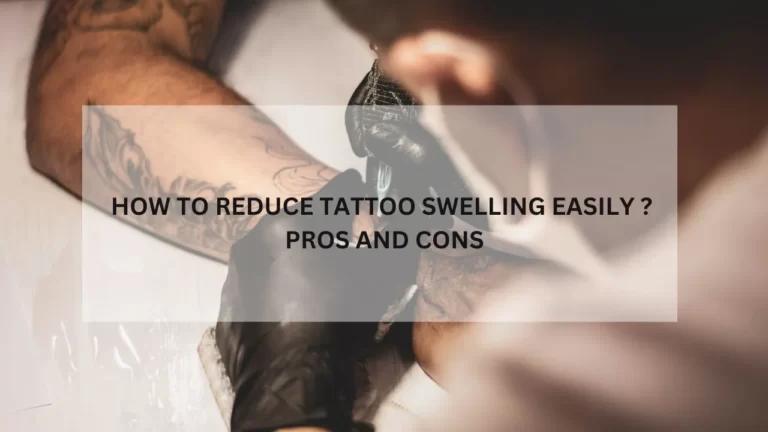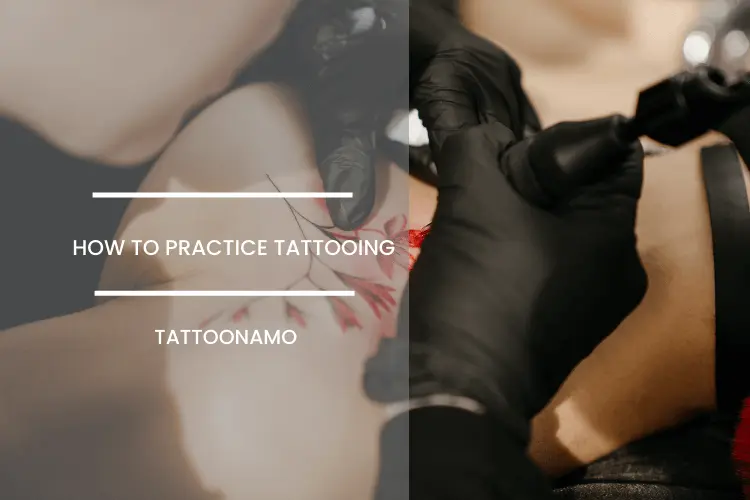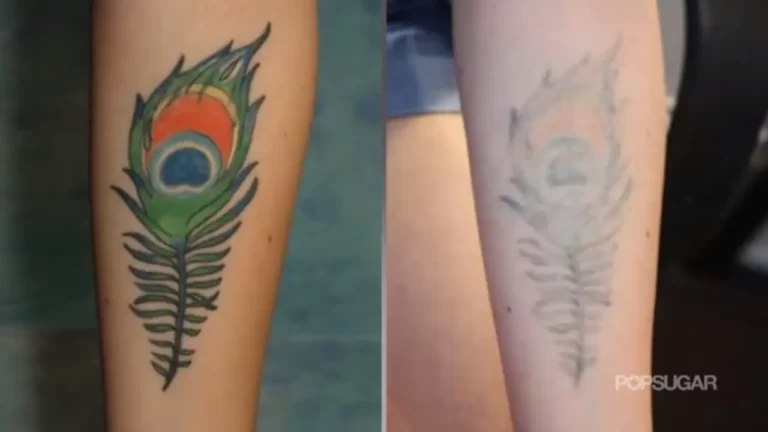How Do Tattoo Needles Work?
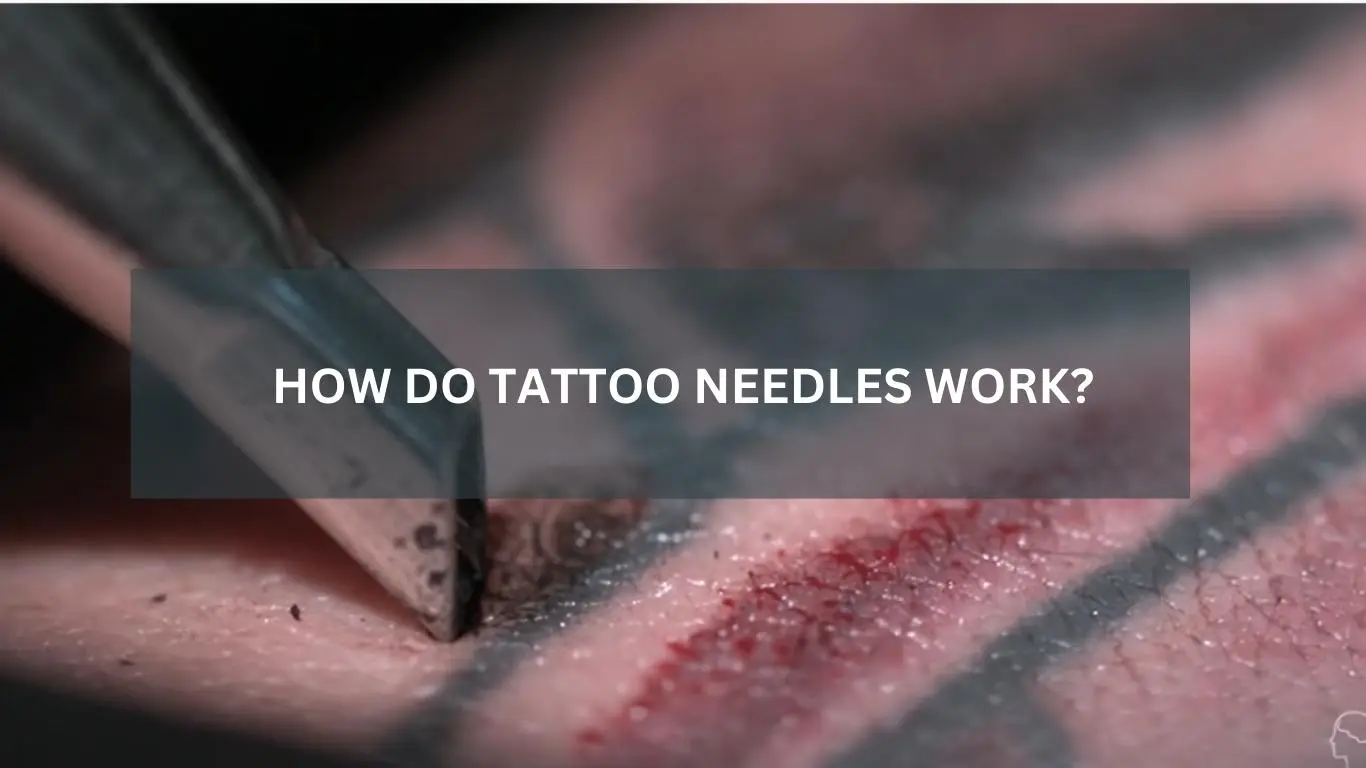
Have you ever seen how fast a tattoo needle injects into the skin? Let’s know about it then.
A Tattoo needle moves up and down rapidly when it is attached to a tattoo machine. The needle pierces the skin at every instant and leaves a small amount of ink behind. These tiny drops create the tattoo image when they are combined altogether.
The speed of the needle helps form a complex and astonishing image due to the presence of tiny holes in your skin. The tattoo needle goes through 1/16th of an inch of skin. That might not sound like a lot of skin, but it is going through sub-layers of the epidermis, the dermal layer, and also the top layer of the dermis. Among these layers is a collection of sweat glands, hair follicles, connective tissue, fat, and blood vessels.
During a tattoo session, the needle passes through the epidermis and epidermal-dermal junction, opening a passage in the 2mm-thick dermis. The dermis is ideal for a couple of reasons. It is far enough not to bleed out and isn’t exposed. Knowing this, the tip of the tattoo needle is minutely adjusted to ensure that it enters the skin to the correct depth. If you were to look at a tattoo needle in the machine, you will see that it sticks out no further than 2mm.
Layers of the Skin
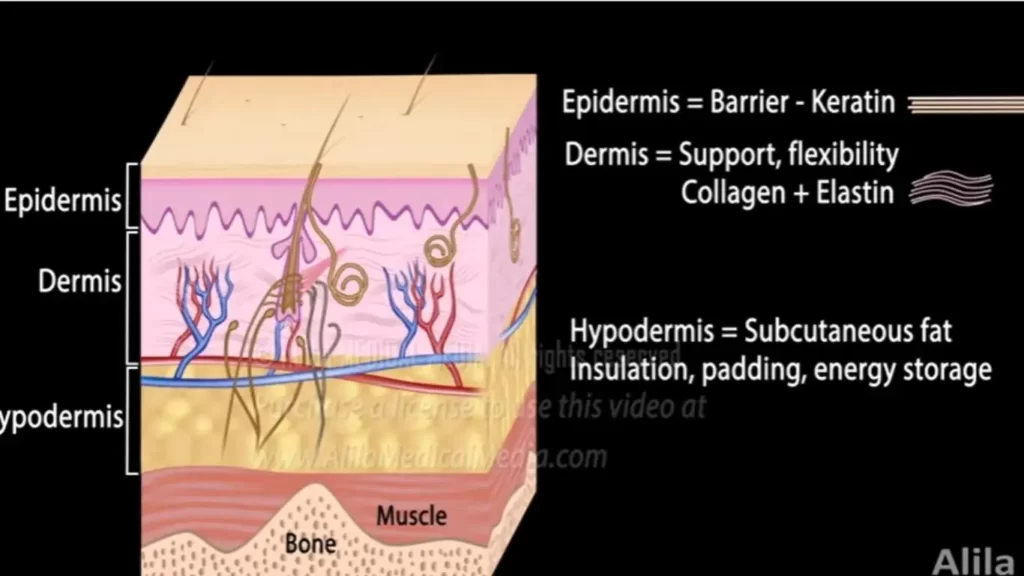
- The Epidermis is the skin surface and the outer layer of the skin. It keeps the body waterproof and helps ensure skin tone.
- The Dermis is placed just beneath the epidermis. It is the layer containing all the connective tissue, as well as sweat glands and hair follicles.
- Subcutaneous Tissue or Hypodermis is the layer that stores the fat and connective tissue.
Tattoo Needle Speed
Machines operate at different speeds. As far as the Tattoo machine is concerned, the tattoo artist operates it at various speeds depending on the desired image. Usually, the Tattoo needle moves up and down relatively slowly at 50 times per minute. However, you can operate it to 3,000 up-down cycles per minute. So, there are the speed ranges of the tattoo needle. So, the speed of the motor ranges from 4,000 rpm to 10,000 rpm. The life of the bearing is typically 1,000 to 1,500 hours, but it can vary depending on the mechanism, duty cycle, and handling of the tattoo machines,” according to Machine Design.
It is acknowledged that a good tattoo artist uses a needle to pierce through the top layer of skin (epidermis). The needle is supposed to reach the second layer of the skin (dermis). The dermis is considered to be a more-permanent layer of the skin, unlike the epidermis which tends to regenerate itself frequently. The needle goes into the dermis with each stroke which is 2mm below the surface.
What Speed Should You Have a Tattoo Gun?
The speed of a tattoo gun depends upon the required image and the artist’s experience. For instance, if the image is complex and sophisticated, then it is likely that the speed should span between 100 times per minute. Moreover, the experience of the tattooist also impacts the speed of the needle; the more experienced the artist, the easier for him to operate the tattoo machine at a higher speed.
It must be kept in consideration that there has to be a certain depth at which the needle is supposed to go into the skin. Otherwise, in medical terms, blowouts are common tattoo complication that occurs when the artist puts the ink too deep. “A good quality tattoo needle can deliver speeds of 50 to 3,000 times per minute. You can emphasize the needs and preferences of the tattoo artist to select the speed. You can’t use a tattoo pen properly if you don’t have an idea of how much speed to change to create a quality design,” said the Business Treat.
How Do Tattoo Needles Work?
A tattoo needle is a combination of points, where ink is held between these points. As the solid needle bursts into your skin, you could see that the ink gets drawn down into the holes of your skin. With the help of a tattoo machine, you can quickly inject ink into the holes, thereby creating beautiful and amazing images. The shape and well-defined lines are made by artists due to the rapidly-moving needle. It is because the constant up-down movement of the needle allows the artist to get the ink to reach the deeper layer of the skin. Thus, this perpetual motion of the needle helps to form unified colors of differing quality.
You need an electric motor to move the tattoo needle. Nowadays, disposable and sterilized needles are recommended. So, most tattoo artists use these needles for health and safety reasons. A tattoo machine also has a reservoir, where the ink is stored. This reservoir too is deposable. It means once you use the tube to inject the ink, you cannot reuse it. However, you can reuse the tube if you disinfect the tube in an autoclave.
What Other Factors Can Influence the Speed of Tattoo Needle?
Many factors can influence the speed of a tattoo needle. Some of them are as follows: the amount of electricity the machine receives (watt), the weight of the armature bar, and the tuning of the machine. The trained tattoo artists are well aware of the fact that how to handle the speed of the tattoo needle depends upon the customers’ needs, skin type, and tattoo design and shape. New tattoo artists need to undergo training beforehand to acquire the requisite skills to become experienced tattooists.
For instance, they have to learn how to tune their machine and what speeds to use for specific types of tattoos. It is widely held that tattooists need at least three years to acquire a firm grip on holding the tattoo machine. Moreover, they are also supposed to keep themselves up to date regarding the new tattoo designs. They have to learn how to draw new tattoo designs on customers’ skin, and they are to work diligently to avoid any mishappening.
Does More Speed of a Tattoo Gun Hurt You?
Whenever you receive a tattoo, your skin is pricked between 50 and 3,000 times per minute by a needle in the tattoo machine. As the needle is to go into the dermis, where nerves and blood vessels are present in disproportionate amounts. That’s why you could get hurt while receiving a tattoo as your skin tends to bleed.
The skin’s natural defense against the potendefensejury is whenever you bleed. Consequently, there appears concentration of a huge number of cells in the place where you got hurt. When we tattoo hair strokes or are doing lining, sometimes our results aren’t as expected, but why? One reason is our speed.
- Inconsistent Speed- Basically what’s happening is that the hand is moving slowly and fast resulting in an inconsistent line with some areas receiving more or less pigment than others. Usually slowing down hand speed will help achieve a solid line.
- Inconsistent Depth- Inconsistent depth results in lines that may appear thicker and blurred when the needle is too deep or the opposite is not enough pressure which results in a thinner line that is to surface and won’t last after healing.
The Most Painful Body Part of Tattoo
If the fattiest parts of your body are the least painful places to get tattooed, logically the boniest parts of your body will be some of the most painful places to get a tattoo. Areas, where a tattoo needle is sure to hit bone, aren’t the only sensitive spots for getting a tattoo, though. For instance, the armpit and back of the knees aren’t exactly bony, yet they top the charts when it comes to the most painful places to get a tattoo.
The list below includes all of the most painful parts of the body to have tattooed, ordered loosely from most to least painful for the average person. Keep in mind that everyone’s different; some people have more meat on some of these body parts than others do, and some just aren’t as sensitive in these most-sensitive areas. This list should just be used as a guideline, not as the definitive word on the most painful places to get a tattoo. The information below each body part listed will also help you understand why it’s so painful to have these body parts tattooed.
The Least Painful Body Part of a Tattoo
When it comes to minimizing the pain of getting a tattoo, your priority should be to focus on the plumpest parts of your body where you think the tattoo you want might look good. Fat is the best defense against the pain of getting tattooed, with a few exceptions like underarm flab and meaty inner thighs. Places like the outer top of your thighs, the meat of your calves, your outer arms (biceps and forearms), your rear end, and your breasts (at least for women) all have more cushion to absorb the impact of tattoo needles, which will make getting a tattoo in one of these areas less painful than it would be to get one elsewhere.
The second tier of least painful places to get tattooed includes the shoulder (preferably away from your shoulder blade), the upper shoulder/lower back of the neck (away from your spine), the lower back, and the stomach. That’s not to say that it won’t hurt to get a tattoo in one of these areas, just that it would likely hurt more to get a tattoo somewhere else on your body.
Does Tattoo Ink Travel Through Your Body?
It is widely held that most of the ink remains attached to your skin, however, some pigments may drip through your body, which to some experts can cause health issues, spanning from mild irritation to even cancer. Hence, the careful printing of tattoos is very important; otherwise one could put lives in danger.
Most often the inks used in tattoos are not developed for use in humans; they are made to be used in painting cars, houses, and iron materials; so it is to be kept in mind that tattoos should not travel through your body. If you feel any sort of irritation or something unusual, then do consult some expert. So, the ink can leak into the body if it happens to some human negligence or other causes.
Tattoos don’t just leave a mark on your outer skin. Nanoparticles from tattoo ink migrate through the body and end up in the lymph nodes, a crucial component of the immune system. That’s the finding of a study published in Scientific Reports Trusted Source. The researchers from Germany and the European Synchrotron Radiation Facility (ESRF) in France used X-ray fluorescence to examine the skin and lymph nodes of four human corpses with orange, red, green, or black tattooed skin.
“When someone wants to get a tattoo, they are often very careful in choosing a parlor where they use sterile needles that haven’t been used previously. No one checks the chemical composition of the colors, but our study shows that maybe they should,” Hiram Castillo-Michel, Ph.D., one of the authors of the study and scientist at the ESRF, said in a press release
Healing Tattoos
The severe impacts of tattooing can be minimized by concealing veins which can be accomplished by makeup, such as a yellow or orange waterproof color-correcting concealer, and skin-colored compression stockings to hide the veins and improve circulation and self-tanner. Also, if you want to get rid of varicose and spider veins rather than just conceal them, you have a few options: Sclerotherapy, Laser therapy, and Vein surgery.
During the healing process, it is best to keep it out of the sun. If you have to, double up your protection. Cover the tattoo with clothing or a bandage, and use sunscreen, preferably with mineral screens. Indeed, unlike chemical filters, they block UV rays at the surface of the skin. As your skin has recently been damaged, the sun can tarnish or degrade your tattoo.
New tattoos fade very quickly when exposed to sunlight. In addition, if your tattoo has not completely healed yet, exposing the area to sunlight could result in blistering. In general, you should keep a new tattoo completely protected from the sun for at least three to four weeks.
Conclusion
Tattoo needles move up and down at a speed of between 50 and 3,000 times per minute. The rate can vary depending on the needs and preferences of the tattoo artist. Artists can control the speed, angle of the needle, ink colors, and other aspects of the process with their tattoo machine. The rate of the needle makes tattooing faster than manual tattoo methods used throughout history.
However, the rate can also give the artist the level of control needed to make high-quality tattoos for their clients.
Tattoo pain depends on your pain tolerance, as well as your sex, weight, even experience in tattoos, etc. So, what is painful to someone doesn’t have to be painful to the other person. Now, to say that color tattoos hurt more solely because the tattooist is using colors or different needles can be interpreted as wrong. But, depending on the tattooist’s technique of coloring/shading, the pain can indeed increase. This especially applies to cases where the artist works with white ink.
When thinking about getting a tattoo, you need to be aware of the pain, regardless of the colors of the tattoo or the needle used. If a tattoo is placed somewhere sensitive, the process will hurt. Pain is a part of the process, so to minimize it you can choose a different placement, use CBD spray to numb the area, or simply not get tattooed.

